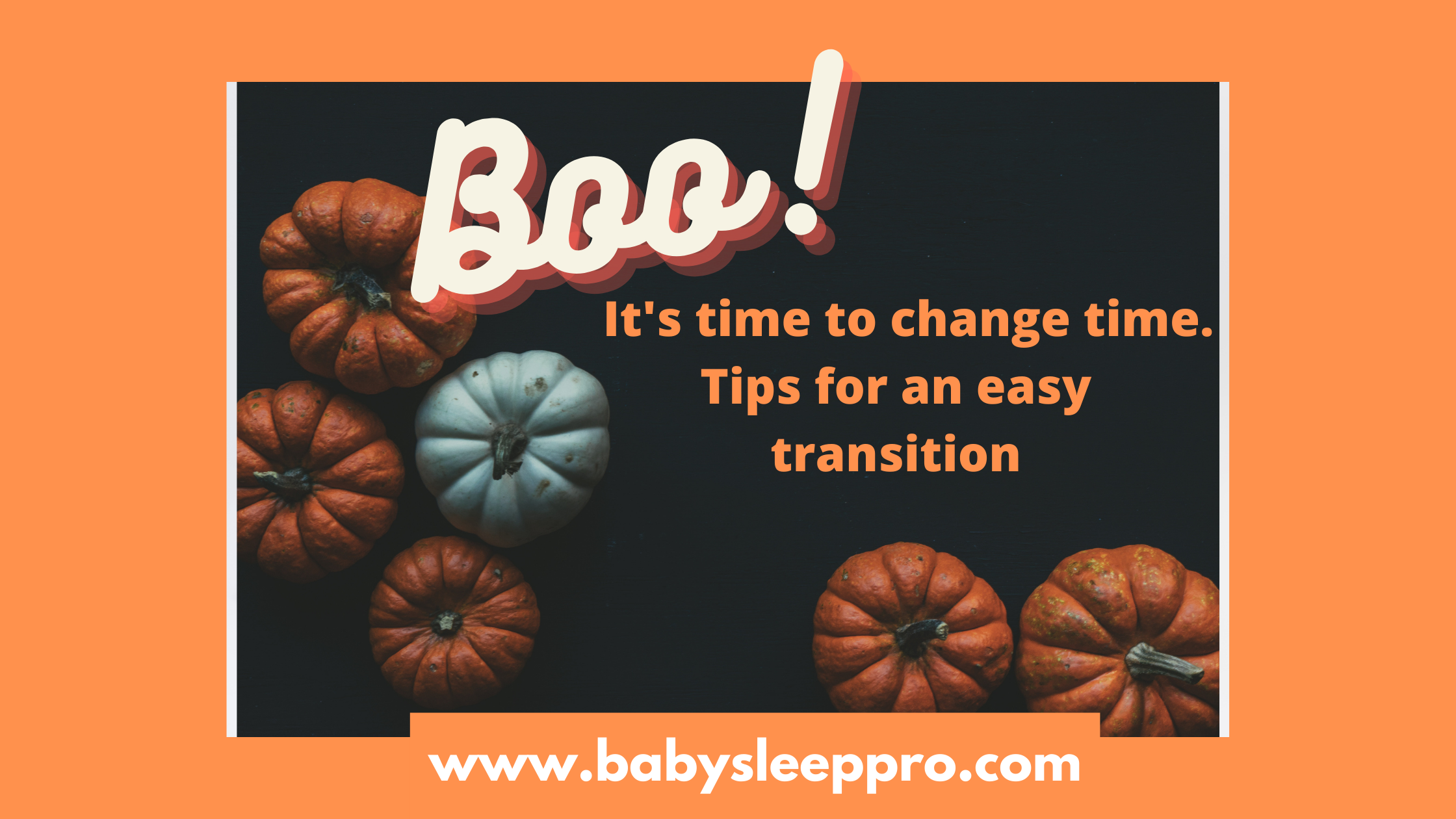
Guess what? We all get an extra hour of sleep on Sunday! Woohoo! But, I know not everyone is jumping for joy… Many of you have reached out to me “petrified” that with the time change, their 6:00 a.m. risers will be waking at the frightful hour of 5:00 a.m., which of course is natural and may happen for a few days until their bodies shift to the new schedule.
The good news is you can take a few steps to minimize the impact of the time change if you start early so that Sunday morning after Halloween can be as lazy as you want it to be! Be sure to read to the end for my 3 secrets to a successful time change.
Here are some options:
Start early: Shift the entire daily schedule later, in 15 minute intervals, starting about 4 days prior to daylight savings. That means starting Wednesday or Thursday and includes meals, naps, activities, as well as bedtimes. If your child usually naps at 9:00am and 1:00pm and goes to sleep at 7:00 p.m, shift the nap to 9:15 a.m. and 1:15 p.m. and bedtime to 7:15 p.m. on Thursday, then 9:30 a.m. and 1:30 p.m. and 7:30 p.m. bedtime the next day and so on. By Sunday, your baby will be fully adjusted. The same schedule shifts applies to meals and activities.
Do nothing: Kids who are well-rested, adaptable, and on predictable sleep schedules will adjust to the new time easily over the course of just a few days. The key is to move to the new time as quickly as possible while respecting their sleep cues that might indicate they are tired a little earlier than usual. Remember they may wake earlier for a few days (if they usually wake at 6:30 a.m., then they may arise at 5:30 a.m. at first), but encourage them to stay in bed as much as possible so that their clocks can reset. Remember earlier wake ups may mean that they may be tired earlier for naps and bedtime. Respect that, and don’t push them to the point of becoming overtired. Expect naps and bedtime may occur 30 minutes earlier for a couple days while they adjust to the new time.
Whichever technique you choose, here are my secret weapons for a guaranteed easy transition:
Nov 01, 2023
Oct 10, 2023
Sep 20, 2023
Sep 02, 2023
Aug 30, 2023
Aug 20, 2023